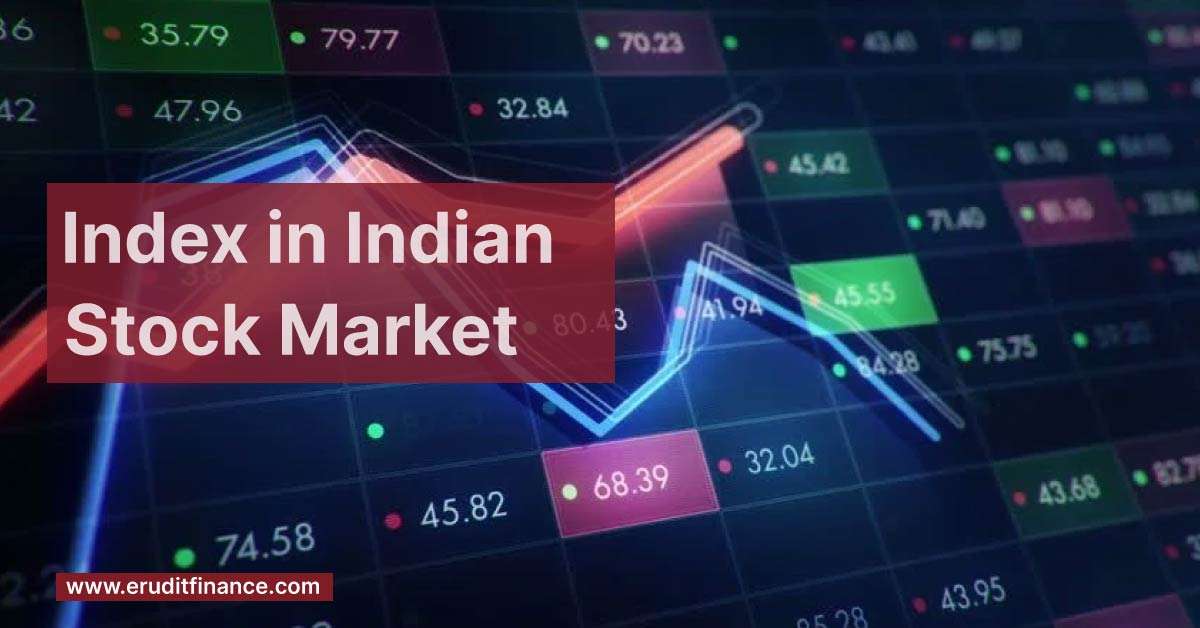Introduction
The Indian stock market comprises key indices that serve as benchmarks for assessing market performance. Notable indices include the Nifty 50 and the Sensex. The Nifty 50 represents the National Stock Exchange’s top 50 companies, while the Sensex reflects the Bombay Stock Exchange’s 30 large, well-established firms. These indices play a crucial role in guiding investment strategies and offering insights into the overall health and trends of the Indian stock market.
How Many Index in Indian Stock Market
There are several indices in the Indian stock market. Some of the prominent ones include:
- Nifty 50- Represents the National Stock Exchange’s top 50 companies.
- Sensex (BSE 30)– Reflects the Bombay Stock Exchange’s 30 large, well-established firms.
- Nifty Bank- Focuses on banking sector stocks.
- Nifty Midcap 100- Comprises mid-sized companies listed on the NSE.
- Nifty Smallcap 100- Includes small-sized companies listed on the NSE.
There are many more sector-specific and thematic indices. Keep in mind that new indices can be introduced, and the composition of existing ones may change. For the latest information, it’s advisable to check with reliable financial news sources or the respective stock exchanges.
What Are the 3 Major Stock Indexes?
In the context of the Indian stock market, three major stock indexes are widely followed:
- Nifty 50- Represents the National Stock Exchange’s top 50 companies, providing a broad view of the Indian equity market.
- Sensex (BSE 30)- Reflects the performance of the Bombay Stock Exchange’s 30 large, well-established companies, offering insights into the overall market trends.
- Nifty Bank- Focuses specifically on banking sector stocks, providing a benchmark for assessing the performance of banking and financial companies in India.
How Many Index Options Are There in India?
there are several index options traded on the National Stock Exchange of India (NSE). Some of the key index options include options on the Nifty 50, Bank Nifty, Nifty IT, Nifty Pharma, and other sector-specific indices. The availability of index options may change over time as new indices are introduced or existing ones are modified. For the most up-to-date information, it’s recommended to check with the NSE or other reliable financial sources.
How Many Stocks Are in NSE Index?
the Nifty 50 index on the National Stock Exchange (NSE) represents 50 of the largest and most liquid stocks listed on the exchange. Therefore, the Nifty 50 index consists of 50 individual stocks. Please note that the composition of indices can change due to periodic reviews and adjustments by the index committees. For the most current and accurate information, it’s recommended to check with the NSE or other reliable financial sources.
What Is the Name of NIFTY Index?
The full name of the NIFTY index is the “Nifty 50.” It is the flagship stock market index of the National Stock Exchange of India (NSE) and represents the performance of the 50 largest and most liquid companies listed on the exchange. The Nifty 50 is widely used as a benchmark for investors and traders to assess the overall health and trends of the Indian equity market.
What Is the Oldest Stock Market Index?
In India, the oldest stock market index is the Sensex (S&P BSE Sensex). The Sensex was introduced by the Bombay Stock Exchange (BSE) on January 1, 1986. It initially comprised 30 stocks and has since been expanded. The Sensex is one of the most widely tracked stock market indices in India and serves as a key benchmark for the Indian equity market, reflecting the performance of the country’s leading and most liquid stocks.
How Is Index Calculated?
In the context of Indian stock markets, indices like the Nifty 50 and Sensex are calculated using the free-float market capitalization-weighted methodology. Here’s a simplified explanation:
- Free Float Market Capitalization- For each stock in the index, the free-float market capitalization is calculated. Free-float market cap considers only the shares available for trading, excluding locked-in shares and promoter holdings.
- Weight Assignment- The weight of each stock in the index is determined by its free-float market capitalization as a percentage of the total free-float market cap of all stocks in the index.
- Index Calculation– The index value is then calculated by summing up the products of each stock’s price and its weight. This value is usually scaled to a specific base period for easy comparison.
The formula for calculating the index is-
Index Value = (∑Free Float Market Cap of Stock×Stock Price) / Index Divisor
The divisor is a scaling factor that adjusts for changes in the index components, ensuring continuity in the index value despite corporate actions like stock splits or bonuses.
Changes in the stock prices and free-float market caps of the index components will influence the overall index value. This methodology accounts for the relative significance of each stock while considering the proportion of freely tradable shares in the market.
Bottomline:-
In the Indian stock market, key indices like the Nifty 50 and Sensex are calculated using the free-float market capitalization-weighted method. This methodology considers the proportion of tradable shares, assigning weights based on stocks’ free-float market caps. The resulting index value reflects the collective performance of constituent stocks. The use of a scaling factor, known as the index divisor, ensures continuity amid changes in index components. These indices serve as vital benchmarks, guiding investors and traders in assessing market trends and making informed decisions.
Also Read:-











Very nice